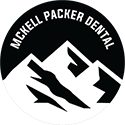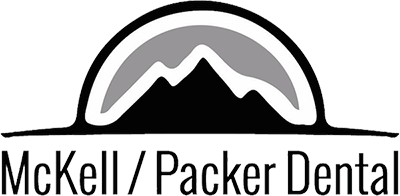Dental bonding serves as both a cosmetic and restorative dental treatment, utilizing a composite resin that matches the color of your teeth to enhance their look or functionality. Whether dealing with a chipped tooth or aiming to fill a minor gap, dental bonding provides a swift and efficient remedy.
Grasping the details of the dental treatments you’re contemplating is essential for making educated choices about your oral well-being. This knowledge enables you to assess the advantages and disadvantages, comprehend the financial aspects, and establish reasonable expectations for the outcomes.
This article aims to offer an all-encompassing overview of dental bonding. We’ll delve into dental bonding, materials used, longevity, costs, and advantages and disadvantages. By the end of this post, you’ll be equipped with the knowledge to determine whether dental bonding is the ideal option for you.
What is Dental Bonding?
Dental bonding involves a dentist using a resin that matches your teeth’s color to either fix damage or enhance their appearance. The term “bonding” comes from the material bonding directly to the tooth. It’s a versatile treatment that can correct various dental issues with minimal time and discomfort.
Common Reasons for Undergoing Dental Bonding
Chipped or Cracked Teeth
One of the most common uses for dental bonding is to repair chipped or cracked teeth. The composite resin can be shaped to resemble the missing part of the tooth, restoring its natural appearance.
Discolored Teeth
Discolored teeth can also be covered with dental bonding. Whether the discoloration is due to staining foods, medications, or other factors, the composite resin can be matched to the desired shade to provide a uniform look.
Gaps Between Teeth
Dental bonding can be an effective and less expensive alternative to orthodontic treatments if you have minor gaps between your teeth. The resin can be applied to the sides of the teeth to fill in the gaps, providing a more aligned and cohesive appearance.
Types of Materials
In dental bonding, the primary material is composite resin, a tooth-colored material that blends seamlessly with your natural teeth. This resin is made from a plastic and glass blend, offering aesthetic appeal and durability. Several other materials, such as porcelain and ceramic, can be used in dental bonding, although these are less common and often more expensive.
Safety
Composite resins used in dental bonding are biocompatible, meaning they are safe to contact your body. They have been subjected to rigorous testing to ensure they do not cause harm or allergic reactions. Additionally, the procedure is minimally invasive, often requiring no anesthesia or removal of tooth structure, making it a safe option for most people.
Durability
While composite resin is a durable material, it’s worth noting that it’s not as strong as your natural teeth. Dental bonding can last a few years, depending on oral hygiene and lifestyle habits. However, with proper care, some people find that their dental bonding lasts longer. To prolong the life of dental bonding, it’s crucial to practice excellent oral care and steer clear of behaviors that could damage it, like biting on hard items.

How Long Does Dental Bonding Last?
Dental bonding is a relatively long-lasting solution for minor dental imperfections, but it’s not a permanent fix. Dental bonding usually lasts between 4 and 8 years. However, the longevity can vary based on several factors, which we’ll explore below.
Factors Affecting Longevity
Oral Hygiene
Maintaining excellent oral care is vital to prolonging the durability of dental bonding. Consistent brushing and flossing can ward off plaque accumulation, which could otherwise weaken the bonding material and result in staining.
Diet
The beverages and food you consume can also impact the longevity of dental bonding. Sugary and acidic drinks and foods can weaken the bonding material over time. Additionally, coffee, tea, and red wine can stain the material, affecting its appearance.
Chewing Habits
Your chewing habits can also affect how long your dental bonding lasts. Using your teeth for tasks like opening packages or chewing on hard items like ice can compromise the bonding material, shortening its longevity.
Maintenance Tips for Extending the Life of Dental Bonding
Regular Dental Check-ups
One of the best ways to extend the life of your dental bonding is to have regular dental check-ups here in our office in Provo. Routine visits allow for early detection of any issues with the bonding material, making it easier to address problems before they worsen.
Avoiding Staining Foods and Drinks
Limiting the intake of staining substances like coffee, tea, and red wine is advisable to preserve the appearance of your dental bonding. If you indulge in these beverages, using a straw can help minimize their contact with the bonded teeth.
Using a Mouthguard for Teeth Grinding
If you have a habit of grinding your teeth, especially at night, using a mouthguard can safeguard your natural teeth and the bonded material. Grinding can pressure the bonding excessively, leading to cracks or chips over time.
How Much Does Dental Bonding in Provo Cost?
The cost of dental bonding can vary significantly based on several factors. The price per tooth ranges from $300 to $900. However, this range can fluctuate depending on your specific circumstances, such as the complexity of the procedure and the dentist’s expertise.
Factors Affecting the Cost
Geographical Location
The cost of dental procedures, including bonding, can vary depending on where you live. Generally, dental services are more expensive in metropolitan areas due to higher operational costs and cost of living. At our office in Provo, dental bonding costs below the national average.
Expertise of the Dentist
The dentist’s qualifications and experience can also impact the cost of dental bonding. Dentists with specialized training or extensive experience may charge more for their services.
Complexity of the Procedure
The complexity of the dental bonding procedure can also affect the overall cost. For example, bonding that involves multiple teeth or requires additional procedures like tooth contouring will likely be more expensive.
Is Dental Bonding Worth It?
Deciding whether a dental procedure is worth the investment involves considering various benefits, risks, and costs. In the case of dental bonding, the advantages often make it a worthwhile option for many people. Here are some of the key benefits:
Advantages of Dental Bonding
Quick Procedure
It is important to note that dental bonding is one of the fastest procedures available. Unlike other dental treatments like veneers or crowns, which may require multiple visits and weeks of waiting, dental bonding can often be completed in a single appointment. This makes it a convenient option for those with busy schedules or those looking for immediate improvements.
Less Invasive
Dental bonding is a minimally invasive procedure, often requiring no anesthesia or removal of tooth structure. This makes it a less daunting option for those anxious about dental procedures. The lack of need for anesthesia also means that recovery time is minimal, allowing you to return to your daily activities almost immediately.
Cost-Effectiveness
Dental bonding is inexpensive compared to cosmetic dental procedures like veneers or crowns. Additionally, because the procedure is quick and often requires only one visit, you save time and additional appointment costs.
What Are the Disadvantages of Dental Bonding?
While dental bonding offers several advantages, it’s essential to consider its limitations and potential risks to make an informed decision. Here are some of the critical drawbacks:
Limitations of the Procedure
Dental bonding is most effective for minor cosmetic changes and unsuitable for significant dental issues like severe tooth decay or structural damage to a tooth. Additionally, the bonding material is not as strong as natural teeth so it may chip or break more easily.
Potential Risks and Complications
The hazards of dental bonding are relatively low, yet they may encompass sensitivity to extreme temperatures right after the treatment. There’s also a slight risk of the bonding material detaching if you bite down on hard foods or objects.
Comparisons with Alternative Treatments
Dental Bonding vs. Veneers
Veneers are another popular option for cosmetic dental improvements. Unlike bonding, veneers are made from porcelain and are more durable and stain-resistant. However, they are also more expensive and require the removal of some tooth enamel, making the procedure more invasive.
Dental Bonding vs. Crowns
Dental crowns provide a long-lasting solution for damaged or decayed teeth but are more invasive and costly than bonding. The procedure involves removing a significant portion of the tooth structure and may require multiple visits. Crowns are often recommended for more severe dental issues, where the strength and structure of the tooth need to be restored.
Conclusion
Dental bonding is a versatile and cost-effective solution for minor dental imperfections like chipped or discolored teeth. It offers several advantages, including quick procedure time, minimal invasiveness, and cost-effectiveness. However, it’s essential to consider its limitations, such as its suitability mainly for minor cosmetic changes and its less durable nature than other dental treatments like veneers and crowns.
Dental bonding could be an excellent option if you’re dealing with minor dental issues that affect your confidence or quality of life. It’s a quick and relatively inexpensive way to improve the appearance of your teeth. However, if you have more severe dental problems or are looking for a long-lasting solution, you may want to explore other options like veneers or crowns. Before making any decisions, please consult one of our dentists at McKell/Packer Dental in Utah County to discuss your needs and options. They can offer tailored guidance and assist in ascertaining whether dental bonding is the appropriate option for you.

